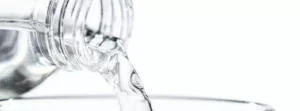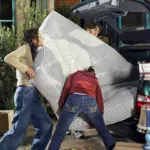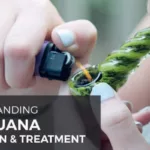You’d probably want to be with nature once in a while. Hearing the birds chirp in the misty morning and feeling the sun’s rays as they penetrate the towering trees sound like a good idea for a great vacation. Who would not want to? Imagine nature’s serene beauty, compared to the bustling sound of the city. After a long hard week in the CBD, you’d feel like taking a trip to your preferred campsite, right?
If you’re already at the campsite, you would most likely feel refreshed in the morning as you inhale the cool breeze. As you go about your activities throughout the day and the sun becomes brighter, you would eventually feel the scorching heat which may drain you as you take a hike. This is when you would feel the thirst for beverage which might not be readily available. Fortunately, you have a good source of natural cool water down the river. This could easily quench your thirst, but you hesitate to drink from it. Wait, is it safe to drink in the first place?
Chances are it may have some contaminants, so you need to make sure it is clean from bacteria and residue. Here are some ways by which you can purify water whilst you’re having fun and enjoying your stay in the wild:
1. Boil the water
This is the most common and practical means of purifying water whilst you are camping. A downside is that it takes a lot of fuel or heat source and more of your time to kill bacteria at a certain level of temperature. Moreover, it may still contain some residues that should be filtered so that the water becomes fully potable.
2. Make DIY filters
There are several ways where you can filter water with materials that are available within your camping area. One of them is by using a small piece of wood and tubing. It could eliminate up to 99% of the bacteria, although viruses would not be included. This is the reason water still needs a little more purification after filtering. You may still want to boil it after filtering if for your peace of mind.
3. Bring commercial filters
If you are not confident about your natural filters, you can bring commercial filters such as survival straws and gravity filters. However, they are a bit expensive and some may be bulky to carry.
Pleated filters can effectively clean the water, but there’s no back flushing so the tendency is that it clogs easily; hence, there is a need to replace it more frequently. Ceramic filters, on the other hand, can do back flushing and have a higher filtering ability. The downside is that they are less durable.
Life straws could work best in the wilderness. This is an actual straw that you can use and sip directly from the source. Some companies do provide water bags that could be connected to the straw as well.
Other water purifiers need electricity to work. If you need power to make an electric filter work in the middle of the forest or up on a hill, well, you can use 160-watt solar panels as your power source.
4. Try go-bottle filters
These are actual bottles where you can just scoop water and head on the road. These are normally used by those who do not have much time for the usual way of purifying water. In fact, they are preferred by members of search-and-rescue teams. You could easily put one in your bag or in your bike. However, if you want to have a big gulp from the bottle, this won’t quickly satisfy your thirst.
5. Put some chemical tabs.
These tabs offer an easy way of purifying water, and they are also inexpensive. Chlorine and Iodine are known to kill bacteria but again, you still need to filter those residues. You have to wait 30 minutes for it to work well and you need to get used to the taste, too.
Remember that iodine does not work on Chryptosporidium; chlorine dioxide will. It is not advisable to take iodine if you’re pregnant.
6. Carry handheld filters
These are very compact items—lightweight and easy to use. They normally contain carbon elements that could remove heavy metals, chlorine, pesticides, or herbicides. When they reach the optimum use, you need to change the filter or perhaps, brush it so it could buy you more time before paying for a new one.
7. Use ultraviolet water purifiers
These are effective in eradicating protozoans (one-celled organisms), viruses, and bacteria. It is just that UV purifiers are not good at keeping turbid waters clear so you would still need the filters to make it an enticing drink.
For a constant supply of potable water in your camping grounds, check out OutbaxCamping, Australia’s best provider of quality camping gear and camping equipment. Visit the site today!








